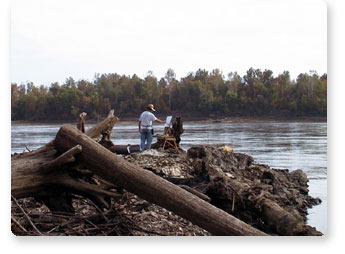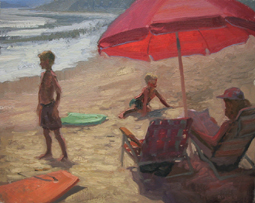The Artist as Entrepreneur |
Billyo
O'Donnell
|
Q. Have you always
worked in your current profession? If not, what other professions
have you had?
A. I was an illustrator for 13 years, and it was a great experience. The job happened to be with the third largest art department in the U.S., so each day was an educational experience talking and working with a number of excellent painters and illustrators. The other jobs were many: floral design, carpenter, designer, etc.
A. Doing what I do with very little in terms of money. With this, there is then the challenge of doing it for money or pursuing what you do for yourself. This was a challenge for many years. I had no desire to live a sad life like Van Gogh. Everyone has their needs and for me it was my art and getting by on as little as possible.
My first year of college, I failed most every class - even art. I felt college was hard, and to become an artist, even more difficult. The instructors made it clear, a career in art is the hardest to succeed at, with a ratio of only 1 in 40 making it, and I saw many disappear along the way. The art instructors who flunked me, told me I was one of the most talented students they had seen, but until I took it seriously, they did not want me back. It was then that I had a series of jobs. I worked in an iron foundry, where after six months, I would cough up blood from my lungs. Then, I took a seasonal job on a hog farm. From there, I worked at a sawmill, where I cut my left hand so badly, my thumb hung over onto my palm. It was then, as I stood in the office doorway while my boss (I remember his name to this day) was wrapping my hand, that I realized he was about 50, he was a hard-working, good man who had raised a family, and yet had very little. I then used him as a model, knowing if I pursue my art, that, at the worst, I could always be like him. What more would I need? I decided then, I would pursue art, not as a trial run, but that it would become my life. It was my bliss. So, making a living was not important, only just getting by. Q. What advice would you give to a young adult who wants to try to make a living as an artist? A. You have to follow your bliss in life, and the toughest thing is to be honest with yourself. To say you are an artist is very alluring, but it is only with years of really hard work and determination that you may find yourself starting to succeed, and it may not get any better than that. There was a time when the art market had no interest in landscape painters, so I did it solely for myself for many years, while I did other jobs. The answer is keeping a balance to your personal needs and your creative self. If I do not paint, I become depressed; if I don't make money, I starve. There will be times you must sacrifice one for the other. So, the answer is finding the balance. I know some artists who have sacrificed their art to earn great sums of money and others who will go through great lengths not to sacrifice their art. Oh, and the working really, really, really hard part never goes away. Take a look at Billyo O'Donnell's work on his website at billyoart.com. For more of Billyo's work, go to paintingmissouri.com. copyright 2004, Center for Entrepreneurship and Economic Education, University of Missouri-St. Louis
|


